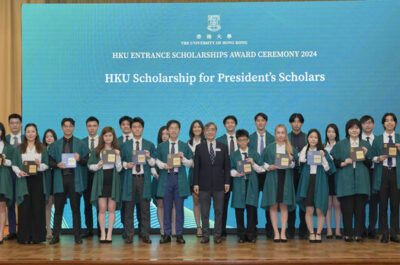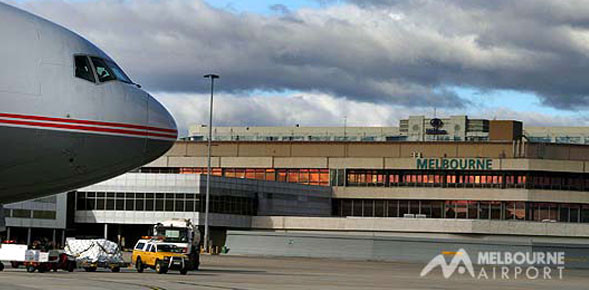Melbourne Airport continues to show industry leadership in undertaking innovative planning and an aggressive approach to growth which will be of significant benefit to the local and national tourism economy.
MELBOURNE – Melbourne Tullamarine International Airport has the ambition to double its passengers’ traffic to 60 million over the next 20 years. Earlier this month, the airport unveiled a massive US$ 1.1 billion investment’s project to upgrade facilities over the next five years. The future infrastructure includes plans for a new Southern Precinct domestic terminal to support the growth in the domestic passenger market, in addition to the current refurbishment of the T3 terminal in conjunction with Virgin Australia. A new Terminal 4 building will be constructed next to the existing T3 building. It is foreseen to put all terminals under one roof, allowing easy movement between airlines for domestic and international flights, the gateway said.
New roads to alleviate traffic congestion are also due to be built. Chris Woodruff, CEO at Melbourne Airport, indicated that consultation with airlines and transport companies as well as the Australian government would start early next year, and was expected to take about nine months.
The airport is also looking to attract more non-stop international services thanks to Melbourne strong positioning as a major MICE, entertainment and leisure destination in Australia and abroad.
International passenger numbers at Melbourne Airport increased by 8 % in financial year 2011/12 compared to the previous FY with a total of 6.78 million passengers. “Despite economic turmoil in some parts of the world and generally challenging conditions for aviation more broadly, Melbourne is continuing to attract more international passengers, greatly supported by our 24/7 curfew-free operations and Victoria’s strong appeal as a destination for meetings, major events, tourism and education”, highlighted Chris Woodruff.
China continues to drive international passenger growth, with Chinese passport holders up by 22 % in 2011/12, to 470,573. Passport holders from India reached 210,454 during the year, up by 7 % while Indonesian passport holders rose by 4 % to 96,476. New Zealand remains the number one passenger market with 727,056 travellers while UK passport holders topped 344,452 during the last financial year.
International airlines increased a number of services during the year, including China Southern’s seasonal daily double service to Guangzhou; Jetstar increased services to Bali; Garuda provided additional services to Indonesia; and Qantas increased its A380 services to London and Los Angeles. “We were particularly pleased by the decision by Royal Brunei Airlines to operate its only Australian flights from Melbourne and to increase to a daily service,” Mr Woodruff said.
The airport estimates however that there is over half a million passengers who still transit through another Australian gateway for international services.
Overall passenger numbers for 2011/12, including domestic and international, were 28.2 million which was a flat result compared to the previous year.
“The long term vision for Melbourne Airport outlined at the recent annual stakeholder update shows real vision and leadership in infrastructure planning that anticipates future needs and aggressively engages with the opportunities presented by key international markets,” commented Australia Tourism Export Council Managing Director, Felicia Mariani.
“Melbourne Airport’s plans to build new infrastructure and expand its capacity shows a willingness to aggressively take hold of future growth and establish Melbourne as a leading international destination and gateway. Melbourne Airport’s leadership and forward thinking is a real blueprint for the planning and expansion that is needed in aviation infrastructure if Australia is to achieve the goals set under the Tourism 2020 Strategy”, she added.
Table: International arrivals to Melbourne International Airport by nationality (passport holders) for FY 2011/12
|
North Asia (%)* |
South East Asia (%)* |
Europe (%)* |
Other (%)* |
||||
|
China |
21.9 |
Philippines |
15.1 |
Ireland |
25.1 |
Canada |
10.4 |
|
Taiwan |
16.0 |
Sri Lanka |
8.2 |
Greece |
22.1 |
Brazil |
10.4 |
|
Japan |
12.0 |
India |
6.8 |
Spain |
8.7 |
NZ |
8.1 |
|
South Korea |
5.0 |
Vietnam |
5.9 |
France |
6.1 |
USA |
7.0 |
(percentage growth compared to 2011)
Source: Melbourne Int’l Airport
Luc Citrinot a French national is a freelance journalist and consultant in tourism and air transport with over 20 years experience. Based in Paris and Bangkok, he works for various travel and air transport trade publications in Europe and Asia.




![[PR] PR_Ascott and Vimut Hospital_2024](https://www.traveldailynews.asia/wp-content/uploads/2024/04/PR-PR_Ascott-and-Vimut-Hospital_2024-400x265.jpg)





























































